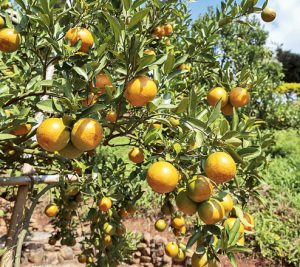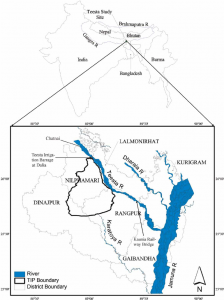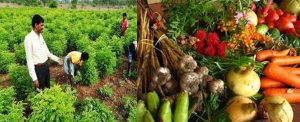Main Features of Budget of Sikkim
Main theme of the Budget 2017-18 – Sustainable Development
Total Receipts and Total Expenditure
For the fiscal year 2017-18, a gross expenditure of Rs. 6364.02 crores has been projected in the budget.
After taking into account recoveries amounting to Rs. 142.20 crores, the net expenditure comes to Rs. 6221.82 crores.
The fiscal deficit remains in adherence to the fiscal management targets set in the Sikkim Fiscal Responsibility and Budget Management Act, 2010, i.e. not more than 3% of GSDP. The contribution from total tax revenue is of the order of Rs. 669.51 crores and in the case of Non-Tax revenue, Rs. 426.46 crores.
The total gross expenditure includes allocations amounting to Rs. 81.76 crores under the dispensation of the North Eastern Council, Rs. 153.66 crores under Non Lapsable Pool of Central Resources, and Rs. 1326.76 crores under Centrally Sponsored Schemes.
In Union budget, the distinction between Plan and Non-Plan has been done away with from the year 2017-18 onwards. This has been done as a measure towards bringing about major fiscal and budgetary reforms while retaining the distinction on the basis of Revenue and Capital expenditures. Since the Union and the States have to work together on the methodology, State has also adopted the same system from the financial year 2017-18 budget.
Reforms in various sectors
Eco Smart Villages
A new concept of “Eco-Smart Villages” is being proposed in this budget with an initial budgetary provision of 1 crore. This is being proposed on the premise that each village has its own characteristic strengths which can be developed independently in providing welfare services and local employment to the people. Each village could develop their unique development models, whether in the promotion of village tourism, pilgrimage centres or dairy farming, etc. This also includes the development of “One Home One Garden” concept through which each household will develop a personal garden with the Government providing necessary technical support.
Education
Education in Sikkim is free up to the college level and state is further making sincere efforts to improve educational standards further both in terms of coverage and quality.
A programme for Educational Quality Improvement launched in eight pilot Senior Secondary Schools of the State has received a funding of around one crore from North Eastern Council. Further it is set to be expanded to cover all Senior Secondary Schools of the State.
Energy
In the terms of clean and renewable energy, Sikkim has attained self-sufficiency in power generation. The Teesta Stage-III with 1200 MW capacity was successfully commissioned on 17th February 2017. State’s total installed capacity has improved to 2013.07 MW subsequently, by initiating other hydro electric projects. The on-going 97 MW Tashiding and 96 MW Dikchu hydro power projects are scheduled to be commissioned by April/May of 2017. The installed capacity will be enhanced correspondingly.
This is a historic milestone and it has made the State self-reliant in clean energy production and has boosted the State’s revenue generation capacity. With the commissioning of such power projects at this scale, state is no more a consumer state when it comes to energy. The state has become a producer State that provides energy for the nation.
It is estimated that Sikkim has a peak potential capacity of 8,000 MW and a steady 3,000 MW of hydroelectric power. About 28 hydropower projects are being set up in the state under the public-private partnership (PPP) mode.
Agriculture
The state government is also laying emphasis on improving organic farming in the state. During 2015-16, the state government recognized the existing MPCS in the state to promote and enhance organic farming in the state. As a result of these initiatives, the state was certified as the first fully organic state in India, by the Central Ministry of Agriculture and Farmers’ Welfare as well as other recognized agencies of the country.
The Sikkim Organic Mission is introducing an e-voucher card system as an effective mechanism to distribute assistances under the Direct Benefit Transfer for ensuring that the Scheme funds are channeled directly to the beneficiaries. This would be a first of its kind initiative in Sikkim and probably in the Country as well.
The state government launched Sikkim AGRISNET, an internet-based agriculture information centre, to promote scientific agricultural methods and convert research into practice in the agricultural sector.
The Sikkim government has announced a technical collaboration with floriculturists from the Netherlands and Thailand to develop the state’s potential in floriculture and market cut flowers from the state globally.
The state government is targeting to launch new agricultural schemes for making farming more profitable in the state and allowing the youth to determine agriculture as a budding source of livelihood. Implementation of such schemes is expected to result in increase in the area utilization for the cultivation and production of various crops.
The Sikkim Government plans to set up Tea Development Corporation of Sikkim, which would be the nodal agency for developing the tea Industry in Sikkim. It would work to expand the Temi tea estates in the state and acquire new gardens either wholly or partially owned by the government.
Tourism
Tourism in Sikkim has emerged as the new profession of the people with its vast natural potential. Promotion of village tourism, homestay, cultural tourism, trekking tourism, ecotourism, wellness tourism, flori–tourism and adventure tourism has given fillip to the tourism trade in the state where a large of number of people are engaged under different employment opportunities.
Infrastructure
As of 2015-16, Sikkim had a total road network of 2,425.45 km. The state government proposed an allocation of US$ 15.36 million for construction of roads and bridges in the state and US$ 7.46 million for road transport.
The total allocation of budget for urban development is estimated to be US$ 5.94 million during 2015-16. In addition, US$ 17.14 million would be allocated for the development of water supply and sanitation and housing sector in the state.
Industry
Allocated budget for the industry and minerals sector in Sikkim is estimated to be US$ 9.46 million. Out of this total allocation, villages and small industries would be allocated US$ 5.97 million and large industries would be allocated US$ 2.75 million. The remaining US$ 0.73 million would be allocated to the non-ferrous mining and metallurgical industries of the state.
Pharmaceutical is an emerging industry in Sikkim due to tax incentives offered by the state government as well as low manufacturing and labour costs. Sikkim is home to 14 major pharma companies, which have significant investments in the state. These include Cipla, Sun Pharma, ZydusCadila, Alembic, IPCA, Alkem Lab, Intas Pharma, Torrent Pharma and Unichem.
In order to give a boost to handloom and handicrafts sector, the Government of Sikkim has been making several efforts, which include providing training to upgrade the quality and designs of the products; bringing expertise and professionals for their marketing and supply, etc.
The Government of Sikkim has placed information technology high on its agenda. The budget allocation for information and broadcasting is expected to be US$ 0.96 million during 2015-16.
The Department of Information Technology, Government of Sikkim is in the process of setting up an IT park and National Institute of Electronics and Information Technology (NIELIT) at Pakyong. The IT Park will have state-of-the-art facilities that will offer a plug and play environment and cater to the specific needs of the information technology and business process outsourcing (BPO) segments.




